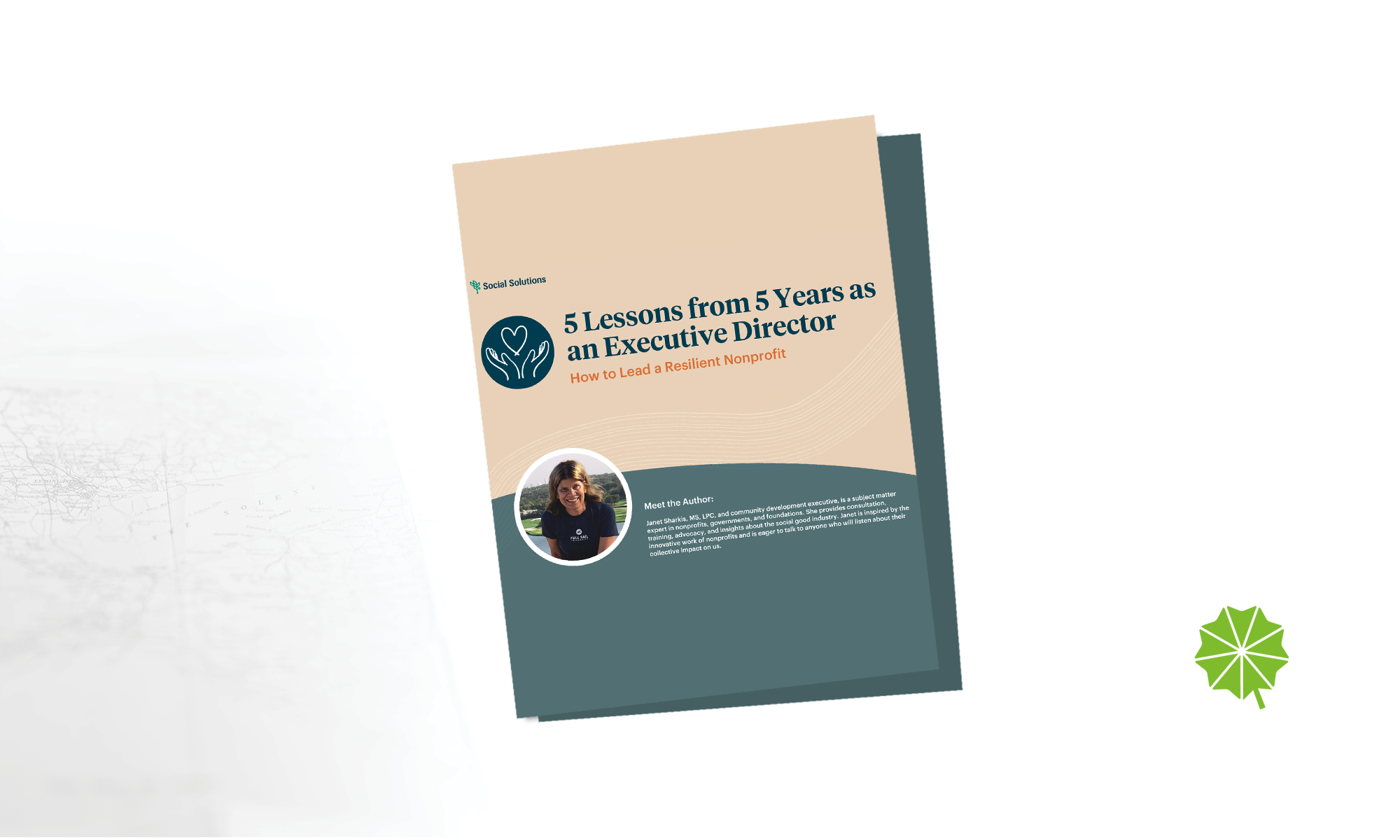
5 Lessons and Tips for an Executive Director
March 28, 2023
Map and Modernize Your Data Strategy: Part 1
April 4, 2023Why Effectively Tracking Outcomes at Your Nonprofit is Important
Why Effectively Tracking Outcomes at Your Nonprofit is Important
Outcomes is a nonprofit industry term used to describe the qualitative and quantitative conclusions you can draw from your organization’s outputs. Outcomes frequently describe measurements of change within your organization or your programs.
Identifying the change affected by your organization and the opportunities for change help make your nonprofit even more effective. And being able to demonstrate that difference is critical in securing funding.
Let’s dive into how to track outcomes better, how they can play a role, and how one nonprofit has been able to track outcomes more effectively using Apricot 360.
Evaluating nonprofit outcomes management
While the process of measuring the outcomes of a program scales well, there are some specific steps you should keep in mind when evaluating particular programs.
- Defining objectives: Of course, everyone wants to know how to measure the outcomes of a program. But, before you can look at the outcomes, you must first analyze your
goals and objectives. This helps ensure that your organization will ask the right questions when setting up your reporting. Your organization needs to ensure that its
programs’ missions are clearly defined and that you know how you will measure its success for each program. Some of these program objectives can be qualitative, but
funders will also want to see quantitative measures, so be sure to focus on these as well. - Data collection: Once you know what questions you are trying to answer, you can focus on what data you will need to answer them. Making sure you have the right system set up for collecting this data and ensuring that any caseworkers or other staff members who will be inputting data understand the larger picture is also an important step in this process.
- Data analysis: After you know what data you need; you have to figure out what to do with it. Here, applies the information you collect in step two to the objectives you set in
step one. This is where a good software solution can come in handy. - Data evaluation: Lastly, evaluate your outcomes management systems regularly—we recommend annually—to ensure they are still serving the needs of the organization and any funders on the program or project. When evaluating systems, ensure they will scale as your services and needs grow.
Counting Outputs and Tracking Outcomes
You’ll frequently see outcomes in the form of percentages. For example, a housing organization may see an 80% reduction in recidivism, or a healthcare nonprofit may record a 45% increase in preventive healthcare screenings.
These figures come directly from the data you collect and the outputs you’re counting at your organization. Outputs are the quantifiable metrics and data points in your organization. For a youth organization, for example, outputs could be the number of students who attended an after-school program or how many school supplies were given to a school system.
Even if your staffers don’t call the process “counting outputs,” your organization probably already does this regularly. It’s cumbersome and tasking for nonprofits to track those outputs without case management software. Case management software like Apricot 360 allows your caseworkers to consistently and quickly input outputs into one centralized location. This will enable staffers on their teams and across departments to view that data, pull reports, and develop insights on the outcomes of the organization’s programs.
Tracking Outcomes Effectively at A Place Called Home
Without software like Apricot, it’s not easy for nonprofits to identify their outcomes in a unified way. Laura Mills, senior director of data & systems operations at A Place Called Home in Los Angeles, California, joined Social Solutions and the Nonprofit Times for a webinar on what funders want to see from nonprofits. She said tracking outcomes at APCH has “been a thorny question for us; I’ll be honest.”
“It’s not something we have all the answers to right now or that we have historically. APCH is coming up on our 30th anniversary, which is very exciting,” she said. “But we started like a lot of nonprofits as a small community-based organization in the basement of a church, and the programs grew in response to community needs, which is my long way of saying we didn’t always build in outcome management as part of that program growth. And we’re focused on, ‘What do our members need? What do their families need?’ And that’s not always going to be filling out a survey, although we recognize the extreme importance of doing that.”
Since adopting Apricot 360 and building up capacity at the nonprofit, Laura said that her organization had created a system of tracking outcomes by creating an organization logic model and theory of change, which APCH didn’t have at the outset of its programming.
“So, we’ve brought in external consultants helping us build our capacity. Plug for Social Solutions—a big part of getting that capacity ready was switching over to being Apricot 360 users over the last couple of years,” she said.
In addition to building capacity, adopting Apricot 360 has allowed APCH to ditch spreadsheets and track data in a centralized place. APCH’s previous method for tracking was arduous, time-consuming, and vulnerable to errors and data loss.
Even with excellent case management software, tracking outcomes can be difficult for nonprofits like APCH because it takes many years to harvest the fruits of the organization’s mission and purpose.
“For a lot of youth and community development organizations, our ultimate goal is long-term, lasting change where people have sustainable careers and they can contribute as active members of their community, etc.,” Laura said. “So, we know even if we’re with a young person for 10 years they’re going to continue with that growth over the course of their lifetime and be different at age 30, 40, etc.”
Laura advises the many organizations also facing this predicament to get creative in capturing and sharing the insights of their work. At APCH, Laura’s team looks at research, indicators, and the long-term outcomes of similar organizations that have been around longer.
You can ensure the longevity of your nonprofit when you can demonstrate your outcomes—your impact—to current and potential funders.
Start Tracking Outcomes at Your Nonprofit with Apricot
Tracking outcomes at your organization doesn’t need to be a daunting and time-consuming task. Evolve your reporting to appeal to more funders and how easy-to-use case management software can help you maximize your limited resources to create those reports. Read Create Reports Funders Want to See today.
This spotlighted blog post is courtesy of Bonterra.
The post Why Effectively Tracking Outcomes at Your Nonprofit is Important appeared first on Nonprofit Hub.
